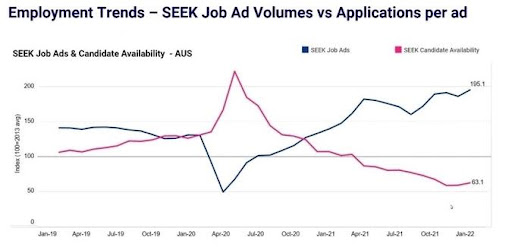What happens when labor markets break?
People usually associate the law of supply and demand with products, but it is just as relevant to the services industry and even employment.
The invisible hand of most economic systems generally manages to balance the delicate and ever-changing forces of supply and demand. Ideally, the two forces find some sort of stasis, which brings stability. If one of the two gets too out of whack, there can be chaos.
In 2020, COVID caused a drop in demand for oil, which caused the prices of crude to drop so low, that people had to pay other people to take it. At a price of minus $37.63 a barrel, to be exact. As one analyst put it: “This is off-the-charts wacky.”
The pandemic also disrupted the shipping industry, causing freight container prices to skyrocket 2x-4x almost overnight. And the recent Ukraine war has spiked gas and grain prices.
It doesn’t take much of a disruption to realize how fragile these ecosystems are.
The world’s employment ecosystem has also been tipped on its head in the last two years. The work-from-home movement led to the Great Resignation and evolved into the Great Regret. Despite severe economic disruption, employers have been unable to find the staff needed to build their business.
Seek, an Australian-based international jobs portal, recently released an interesting chart that succinctly depicts the alarmingly divergent supply and demand levels.
Pink line: job seeker availability; Blue line: available jobs (source: Seek.com). Note: Although this chart depicts the Australian market, it is also reasonably representative of the global market.
No wonder the employment market was hitting boiling point! Salaries were soaring, unemployment was at record lows, and staff shortages curtailed company growth.
As the world moves toward a global economy, having access to a global pool of candidates means that the supply and demand will not be so volatile. When employers can source from a global pool of talent, there will not be such pressure on the supply of capable talent.
With the new-normal of remote-enabled employment, employers now have other options. Offshore and global staffing solutions provide an invaluable release valve to a labor market reaching boiling point.


 Independent
Independent





















